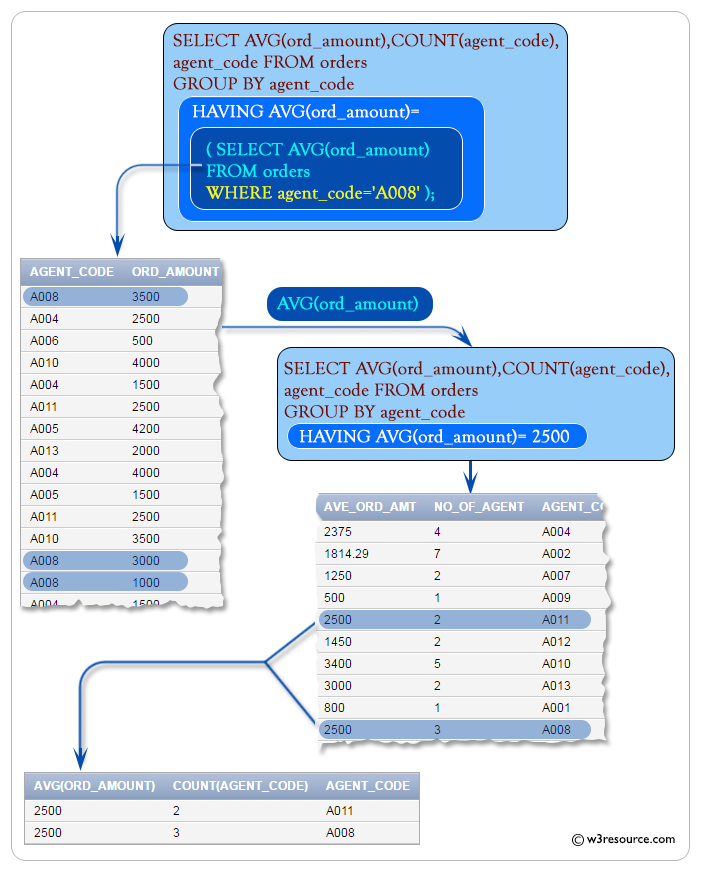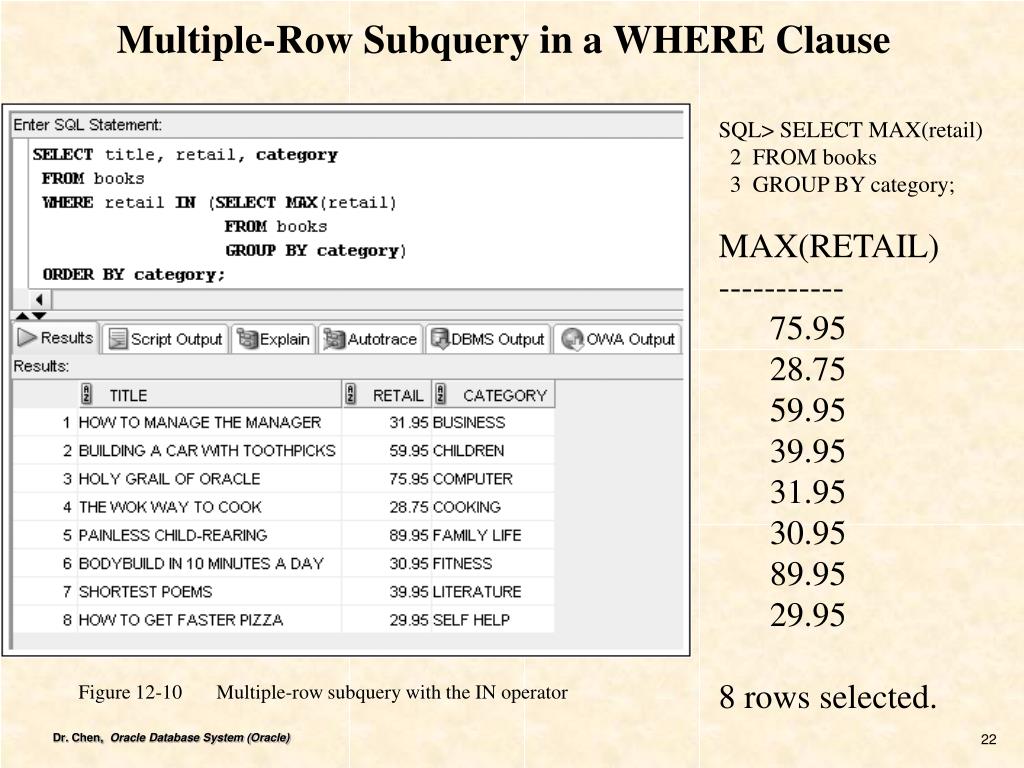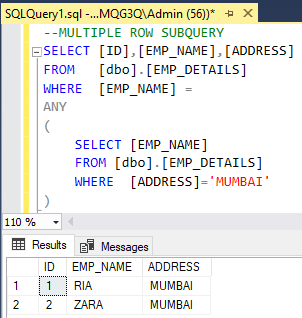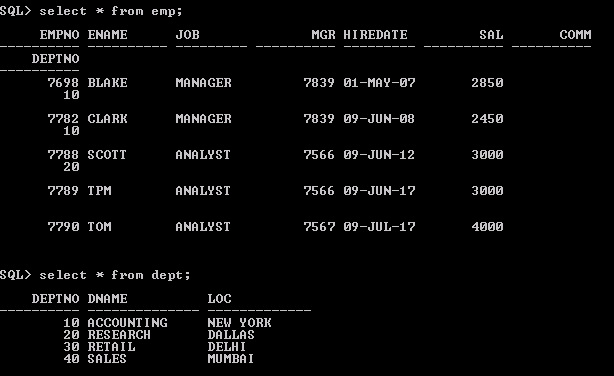Which Statement About Single Row And Multiple Row Subqueries Is True

3 use single row operator with single row subqueries and multiple row operator with multiple row subqueries.
Which statement about single row and multiple row subqueries is true. Any and all operators have the same functionality in multiple row subqueries. A single row subquery can use the in operator. A multiple row subquery can be compared using the operator. Subqueries that can return only one or zero rows to the outer statement are called single row subqueries.
Single row operators can be used with both single row and multiple row subqueries. The in operator can be used with single row multiple row or multiple column subqueries. Multiple row subqueries are subqueries used with an in any or all clause. You may use the in any or all operator in outer query to handle a subquery that returns multiple rows.
A multiple row subquery can retrieve multiple rows and multiple columns d. The like operator cannot be used with single row subqueries. Mark for review 1 points multiple row subqueries cannot be used with the like operator. Single row subqueries are subqueries used with a comparison operator in a where or having clause.
The not in operator is equivalent to is null with single row subqueries. A single row subquery can retrieve only one row but many columns. Subqueries that can return more than one row but only one column to the outer statement are called multiple row subqueries. Multiple row subquery returns one or more rows to the outer sql statement.
Single row sub query. It returns only one row of results and uses a single row operator most common is the equal operator. Select col1 col2 from table1 where col1 operator select col1 from table2 where single row subquery. Although this query type is formally called single row the name implies that the query returns multiple columns but only one row of results.
Which three statements about subqueries are true. The not operator can be used with in any and all operators in multiple row subqueries. A single row subquery can retrieve only one row but many columns c. A multiple row subquery can be compared using the operator.
Which statement about single row and multiple row subqueries is true. A multiple row subquery can use the operator. Which three statements about subqueries are true. A single row subquery is used when the outer query s results are based on a single unknown value.
True based on the contents of the books table which line in the following sql statement contains an error. True a correlated subquery references one or more columns in the outer query and the exists operator is used to test whether the relationship or link is present.


















